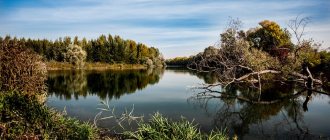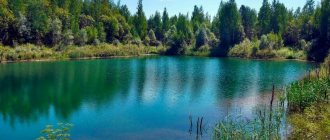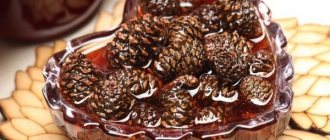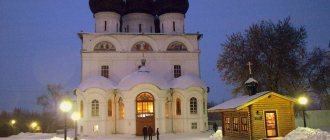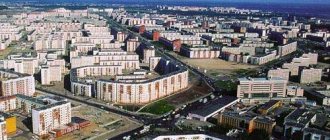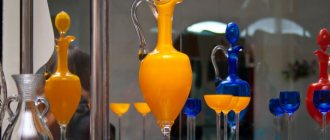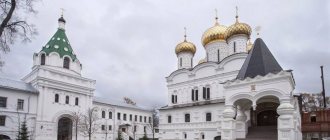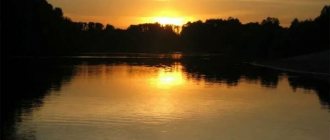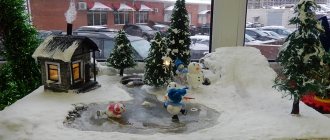Share
Tell
Share
Tweet
Share
It is known far beyond the borders of the republic how varied and unforgettable a holiday in Karelia can be! From all regions of Russia (and from other countries too), at any time of the year, tourists come here - for example, with the help of the trusted company Alem-Tour - to see the treasures with their own eyes: natural, cultural, historical.
To make your weekend a real weekend, you need to plan it in advance. At least today. Gubernia Daily, having decided to help you with your choice, has made a selection of the most beautiful and interesting Karelian places that can be reached by car, and you can also choose tours on your own. If you haven’t been somewhere yet, then go there with the whole family immediately! Just don't forget to bring comfortable shoes. Let's see!
Kivach
You can enjoy the forest air and walk through protected Karelian places in the Kivach Nature Reserve. In addition to viewing the waterfall and visiting the museum with stuffed animals, you can go on the “Taiga World of the Reserve” excursion. You will be invited to walk 600 meters along a picturesque corner along the Suna River and admire the natural beauty. In addition, you can go on a 3-hour excursion “Sopokhsky Bor - Ferrous Keys”, where you will look at a forest stream, swamps and photograph the rare beauty of orchids.
Entrance to the Kivach nature reserve costs 120 rubles. If you want to visit the museum, you will have to pay another 65 rubles. The cost of the excursion “Taiga World of the Reserve” is 100 rubles, “Sopokhsky Bor - Ferrous Springs” is 220 rubles.
Stories, routes and tourist tips
It will be easier to plan a trip to Karelia by car if you read reviews from tourists. From them you will learn which routes travelers take and what they recommend visiting. Those traveling to Karelia by car are advised to acquire paper maps and download offline maps for navigation in places where there is no connection. Another common recommendation is to book your accommodation in advance, especially during high season. It is convenient to explore the sights of Karelia by car in the summer, since driving on the roads at this time is quite comfortable, but in the warm season a large number of tourists come here, so be prepared for queues at the entrance to the top places of the republic.
To Karelia by car - reviews from tourists:
- Maksim Starostin - “Compassion and Grace. For the weekend - to Karelia!
- Victor Martyanov - “The Great Northern Journey. Part 6"
- Andrey Panin - “Around Ladoga by car”
- gebbelev - "Drang nach Norden"
- Anastasia - “Road trip to interesting places in Karelia and beyond”
Read reviews from tourists about traveling to Karelia
Solovetsky Museum-Reserve Photo: © gebbelev
Girvas
Another place worth visiting is the ancient volcano in the village of Girvas. Its petrified streams are still visible in the bed of the Suna River. Every year, when the dam sluices are opened in the village, a waterfall forms on the site of the volcano, which is several times larger than the Kivach waterfall. The floodgates can be closed at any time, depending on the water level. So make sure to go there this coming weekend to catch the big flow of water. This year the entrance fee to the waterfall was waived. It may only be required for a parking space. But if you leave the car on the highway, the excursion will cost you free. By the way, there is an amazing observation deck on the other side of the river. The views from it will impress everyone.
Kizhi
The Kizhi Historical, Cultural and Ethnographic Museum-Reserve is the largest monument of wooden architecture in the open air.
It consists of 82 objects. The famous Church of the Transfiguration, which forms the basis of the ensemble, is included in the UNESCO World Heritage List. It is guarded and preserved especially carefully. The church was restored several times. The most famous are two projects. In the 50s of the last century, under the leadership of Alexander Opolovnikov, the plank lining of the log house and the iron upholstery of the domes of the church were removed, then the temple again acquired its original appearance. For the second time, a metal frame was introduced into the church and closed to visitors due to its emergency condition. Inside the monument, the floors and ceilings were dismantled, and the iconostasis was removed. This method of restoration involved the restoration or complete replacement of worn-out logs without dismantling the monument.
The church was divided into seven zones. Each belt was individually hung on an internal metal frame. The bulkhead was carried out from bottom to top. At the same time, the museum did not close, and all visitors could observe the restoration process.
Last year the Church of the Transfiguration was completely restored, and this year it was consecrated. The first service was held here 84 years later. The rite of consecration and liturgy were conducted by Metropolitan of Petrozavodsk and Karelian Konstantin.
Ruskeala
Active recreation will await you in the Ruskeala mountain park. In addition to walking along the amazingly beautiful rocks, you can rent a boat and ride around Marmara Lake, swimming into small caves. Extreme lovers will be able to fly over the marble canyon with special equipment. Later, in the park, you can enjoy a delicious barbecue in a local cafe. The cost of entry to the park is 150 rubles. Boat rental - 400 rubles. The cost of a flight over the lake is 1000 rubles.
Ruskeala waterfalls
On the way to Ruskeala, be sure to visit the Ruskeala waterfalls. In the place you can have a picnic and have a good time with your family in the fresh air. The waterfalls are famous for the fact that it was here that the films “And the Dawns Here Are Quiet...” and “The Dark World” were filmed.
Balaam
The island is located in the northern part of Lake Ladoga. This is the largest island in the Valaam archipelago. On it there is a village of the same name, which is part of the Sortavala urban settlement, and a monument of Russian architecture - the Valaam stauropegic monastery. And this is one of the most popular tourist destinations in Karelia.
There are practically no local residents left here. Monks live and work. Monks, for example, together with their assistants, grow tomatoes and cucumbers in greenhouses.
There are two large greenhouses on Valaam, one for tomatoes, the second for cucumbers. And special conditions are created for each vegetable. In addition to tomatoes and cucumbers, lettuce, arugula, parsley, basil and cilantro grow in greenhouses. They also plant a bed of onions and nettles. They also grow pineapples. Exotic fruits grow in pots.
You can visit the island and the Valaam Monastery by boarding a hovercraft in the city of Sortavala. And for travelers who come from Moscow to Sortavala, they even developed a special multimodal project, making it convenient to connect in time. You can, having arrived in Sortavala by train, immediately leave for the island and return back on time.
Zoo complex "Three Bears"
The whole family can see the animals at the Three Bears zoo complex. There are tigers, and bears, and lynxes, and wolves, and many, many others. The complex is located 70 kilometers from Petrozavodsk. On weekends it is open from 10 a.m. to 6 p.m. The price of one adult ticket is 600 rubles.
Zoo in Black Stones
Another zoo, which is located near the city of Sortavala, is the zoo at the Black Stones tourist center. Red and spotted deer, roe deer, guanacos, wild boars, llamas, alpacas, Shetlen ponies, domestic yaks, mouflons, deer, fallow deer, curly pigs, Nubian and dwarf goats, ponies, various sheep and many other interesting species can be found there. Ticket price is 150 rubles.
Where to stay in Karelia
The greatest value of Karelia is its forests, lakes, rivers, of which there are more than one thousand or even ten. Both locals and tourists go hiking, rafting, picking mushrooms, berries and fishing. Recreation centers, guest houses and cottages located on the banks of reservoirs are in demand for accommodation in Karelia. Some are easily accessible, large and very popular, providing leisure activities for guests. Others are single houses in the most remote corners of the Republic for those who appreciate complete privacy.
Hotels and offers for renting apartments are found only in the large cities of Karelia - Petrozavodsk and Sortavala, but among them there are also many suburban options.
- Hotels in Karelia
- Hostels for Budget Travelers
- Flats and apartments
- Guest houses in Karelia
Detailed reviews on Tourist will help you understand typical housing in Karelia. RU:
- Recreation centers and hotels on Lake Ladoga
- Houses in Karelia on the shore of a lake
- Recreation centers in Karelia on the lake shore
Booking accommodation on Booking.com with cashback - additional travel opportunities: Cashback promotion for Tourist. RU
Photo: © Natalya Starostina
Natural attractions
Vottovaara
20 kilometers from the village of Sukkozero there is perhaps the most magical and mysterious place in Karelia. Mount Vottovaara is famous for its lakes and rocks, trees and oddly shaped stones. It is believed that the mountain is the center of concentration of evil forces and a thread with the other world.
White Bridges Waterfall (Yukankoski)
Another not very popular, but no less beautiful than Kivach, is the Yukankoski waterfall. It is located on the Kulismajoki River in the Pitkäranta region. The height of the waterfall reaches as much as 19 meters! You can see this beauty completely free of charge!
What to see in Karelia in different seasons
Holidays in Karelia by car are an opportunity to see a lot, but it is worth remembering seasonal problems. For example, in the fall the road to natural attractions can be washed out by rain, in the spring you can get stuck in the mud, and in the winter you simply need to drive with winter tires. Before your trip, study information about the condition of the roads along your route. In general, most attractions can be reached all year round. Water transport to the islands does not go during storms; navigation is closed in September.
White Sea Photo: © Victor Martyanov
Summer
What to see in Karelia in summer by car? This is an excellent time to travel throughout the republic, as the roads at this time of year will be in good condition. They usually go to Karelia by car in the summer for a long time, explore the surroundings of Ladoga and Onega , and also go to the White Sea . The season is suitable for trips to national parks and recreation on lakes; most sites can be reached by car.
This is a period of white nights, many open-air festivals and navigation along lakes and rivers. Summer is a good time to watch white whales near Belomorsk . The downside will be a large flow of tourists and an abundance of blood-sucking midges, but there is another plus - the opportunity to pick berries. Many travelers go to Karelia with children by car in the summer, choosing accommodation in guest houses and recreation centers near picturesque lakes with a variety of water activities.
You can go around the lakes of Karelia by car in the warm season to relax not only on the rocky shores, but also on the sandy beaches. These can be found in the eastern part of Lake Ladoga , for example, near Ilyinsky.
Detailed advice on what to see in Karelia in summer
Lake Onega (Medvezhyegorsk) Photo: © Victor Martyanov
Autumn
What to see in Karelia by car in autumn? This is the season for connoisseurs of the changing colors of nature, so first of all it is worth looking at the forests and lakes in the national parks and reserves of the republic. The most accessible are “Ladoga Skerries” , “Kivach” . the Ruskeala mountain park looks very picturesque, surrounded by marble rocks and a golden forest.
Ruskeala Photo: © Sergey Shaburov
Winter
During the cold season, northern nature captivates travelers. By car you can get to the estate of the local Father Frost , to the sled dog kennel , to the Ruskeala park with fairy-tale evening illumination and the ice-free waters of Kivach . In winter, it is worth booking snowmobile tours to famous sights of the republic. At this time, it is best to watch the northern lights; by car you can go away from the cities, to cozy and colorful villages.
Detailed advice on what to see in Karelia in winter
Northern Lights Photo: © Galina Gorshenina
Spring
This is the best time to explore Karelia waterfalls by car. During the flood period, they appear in full power, throwing violent streams of water down. How to get to Karelia waterfalls by car? Getting to the most famous ones is not difficult ( Kivach , Girvas ). There is a dirt road leading to the less popular ones ( White Bridges , Lower Koirinoja , Roskelakoski ). Spring comes slowly, in the first month the landscapes may resemble winter ones, and closer to summer you can go rafting.
Excursions around Karelia
A trip to Karelia by car means independence from excursion schedules. But while traveling, you should pay attention to tours with professional guides. As part of an organized excursion, you can visit places that you had not planned, learn interesting facts from the history of the peoples of the region and get to know their culture better. You can order both sightseeing tours of cities, as well as visits to picturesque natural places and a trip to the islands. Guided walks around Petrozavodsk and Kizhi Island, along former Finnish territories and other options are offered. Traveling to Karelia by car is a good option for combining independent relaxation with participation in exciting excursions.
Excursions around Karelia on the Experts portal. Tourist. RU
History of the formation of Karelia
The first traces of human presence on the territory of modern Karelia date back to the Ice Age—VII–VI millennium BC.
Thanks to natural conditions, local residents engaged in hunting, fishing and gathering. By the end of the 1st millennium BC. e. The main ethnic composition was formed - Karelians, Vepsians and Sami. At the beginning of the new era, the Viking state of Radbar existed in this territory. According to Novgorod letters, at the beginning of the 11th century, the Lithuanian army attacked the northern lands. By the 14th century they became part of the Novgorod Republic, and after that of the Novgorod state. After the war with the Swedes, under the terms of the Stolbovo Peace at the beginning of the 17th century, the northern lands went to Sweden. And a hundred years later, as a result of the Northern War and the Peace of Nystad, they became part of the Russian state.
At the beginning of the 19th century, a new administrative entity arose with its center in Petrozavodsk - Olonets province. After the revolution of 1917, part of it was transformed into the Karelian Labor Commune. And three years later, the Karelian Autonomous SSR was created on its basis. In the early 40s of the 20th century, it was renamed the Karelo-Finnish Republic, then again returned to the KASSR version. And only after perestroika in 1991 the administrative entity received its modern name - the Republic of Karelia.
